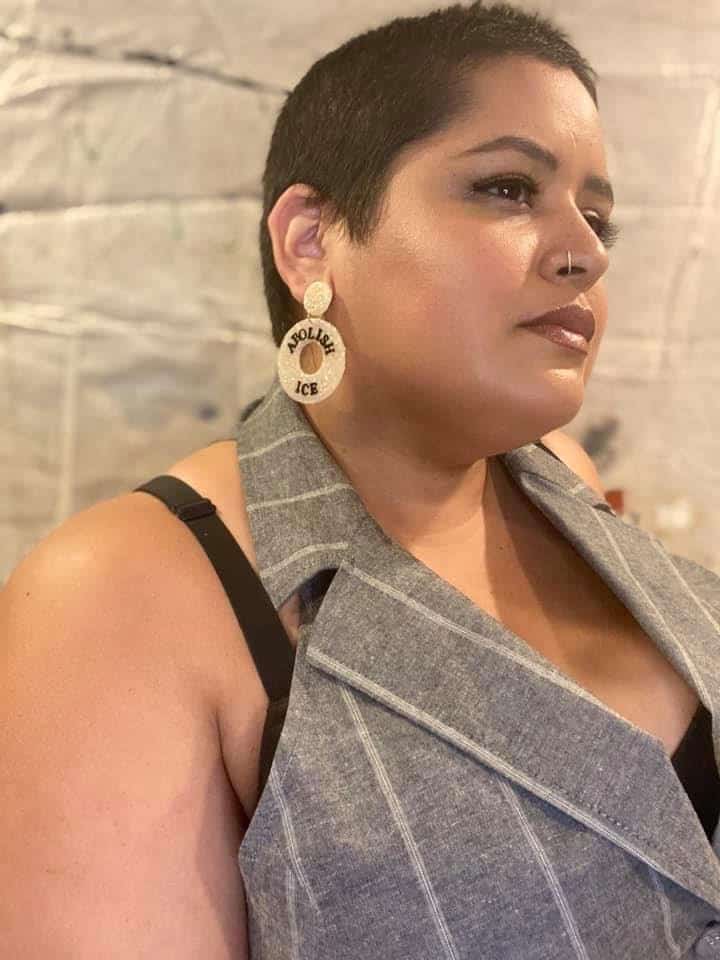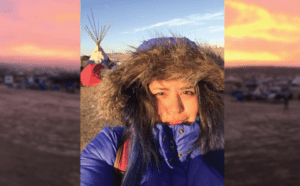“The task of prophetic ministry is to nurture, nourish, and evoke a consciousness and perception alternative to the consciousness and perception of the dominant culture.” —Walter Brueggemann
Liberation Starts in the Imagination
For me, justice begins with radical imagination. The world can only grow and heal as far as our imagination can reach. I’ve learned this not just through study, but through practice. Whether I’m painting, writing, or creating ritual, I return again and again to this truth: liberation starts in the imagination.
The justice movements I participate in—abolition, antiracism, queer and trans liberation, etc.—are fueled by the same sacred current that moved through the prophets of Scripture. Those prophets didn’t just issue commands; they created alternative worlds, using poetry, parables, and performance to engage and activate the people.
As a leftist Christian artist, I see imagination not as a luxury but as necessary and prophetic. It’s how we disrupt empire, unmask injustice, and open up new ways of being.
Scripture is filled with artists. For example:
- Ezekiel engaged in performance art—lying on his side for over a year, cooking food over dung, and etching cities into clay tablets.
- Jesus was a storyteller who spoke in parables that flipped expectations, inviting listeners into a different kind of kin-dom.
- Isaiah saw swords becoming plowshares and lions lying down with lambs—pure artistic imagination.
These weren’t random acts. They were strategic, embodied, and creative. They were art forms with theological power. I see myself in that lineage. As an artist committed to justice, I’ve experienced how a painting, a story, a ritual, or even a meal can open up space for grief, truth, and radical imagination. It’s not just art—it’s ministry. It’s testimony.
Art Is Testimony
Liberation theologians remind us that imagination is foundational. Gustavo Gutiérrez wrote that building a just society means overcoming every obstacle to authentic community. The first obstacle? Believing the world in its current state is all it can be. As an artist, I push against that every time I create.
Art has always been a tool for liberation, and we see that throughout history:
- In the U.S., enslaved Africans sang spirituals that were both expressions of faith and coded escape routes—sacred strategies of resistance.
- In Latin America, the liberation theology movement sparked murals and prints showing Jesus beside revolutionaries.
- In the U.S., Emory Douglas, an American graphic artist, used his illustrations in the Black Panther newspaper to declare Black children sacred.
- Among Indigenous nations, art and storytelling have always been powerful tools for survival, sovereignty, and spiritual resistance. Speaking truth on stolen land is a form of resistance.
As bell hooks once said, “The function of art is to do more than tell it like it is—it’s to imagine what is possible.”
That’s the work I try to do. All around us, creatives are offering more than beauty; they’re offering critique, lament, and vision. What Brueggemann calls an “alternative consciousness” is alive in zines, murals, reels, and ritual. This is prophetic work. And it’s already building the world to come.
Revelation 12:11 tells us, “They overcame… by the blood of the Lamb and by the word of their testimony.” Testimony has always been the theology of the marginalized. It makes truth public. It refuses silence. And in my experience, testimony doesn’t always come in the form of words. Sometimes it’s visual. Sometimes it’s danced. Sometimes it’s painted on a wall, woven into cloth, or chanted in the streets.
Storytelling is central to every justice movement I know. From #BlackLivesMatter to #MeToo to migrant justice campaigns, storytelling is both witness and organizing tool. Think of the Say Their Name banners, the roadside memorials, the protest signs bearing scripture, sorrow, and urgent calls for justice. These are not just aesthetics; they are theological declarations: We are here. We matter. God is with us.
Murals in Palestine, posters in Ferguson, sacred dances at Standing Rock—these visual expressions boldly resist erasure. In the Christian tradition, to be seen and known is holy. We serve a God who sees.
That creative work belongs to all of us.
To the preacher writing sermons like poems.
To the dancer reclaiming joy in a body once policed.
To the muralist painting saints on city walls.
To the protestor chalking hope onto broken pavement.
Art isn’t a break from justice work. It is the work. Liberation demands imagination—and art is what fuels it. It creates the space where people can see something new. My years as an artist and community organizer have taught me that imagination isn’t a distraction—it’s a guiding star toward what the world can be.
As the prophet Habakkuk said, “Write the vision; make it plain on tablets, so that a runner may read it” (Hab. 2:2). May we be the runners. May we be the writers. May we be the artists, theologians, and dreamers of a world not yet fully seen.
 Born in Venezuela and U.S.-raised, AnaYelsi Velasco Sánchez is a visual artist, justice and liberation consultant, and community organizer who specializes in interlocking justice to create sustainable social change. Through her business, AVS Consulting, AnaYelsi works closely with organizations and businesses to design impactful strategies that foster healing and liberation.
Born in Venezuela and U.S.-raised, AnaYelsi Velasco Sánchez is a visual artist, justice and liberation consultant, and community organizer who specializes in interlocking justice to create sustainable social change. Through her business, AVS Consulting, AnaYelsi works closely with organizations and businesses to design impactful strategies that foster healing and liberation.
She empowers individuals and communities with her diverse skill set, offering tailored anti-oppressive strategic plans, skills-building workshops, and advising on initiatives that connect art, culture, healing, and social justice. Whether supporting nonprofits, cultural institutions, or advocacy groups, Anayelsi empowers her partners to advance justice while ensuring that marginalized voices are at the center of every conversation. AnaYelsi also serves as the Board Chair of the Festival Center in Washington, DC.


